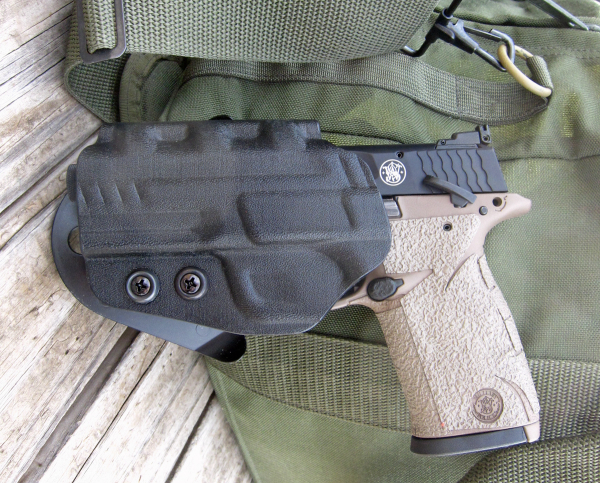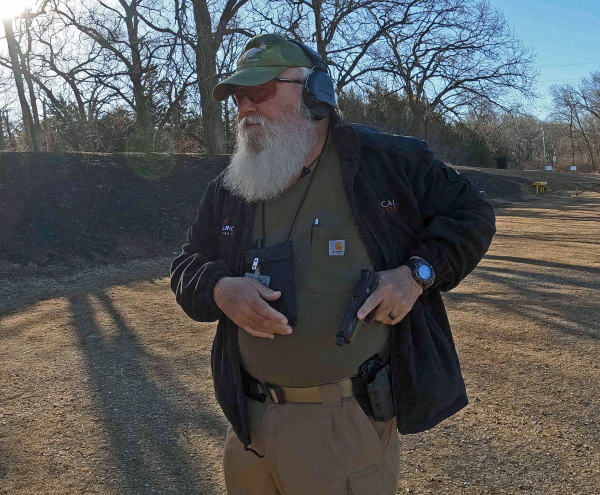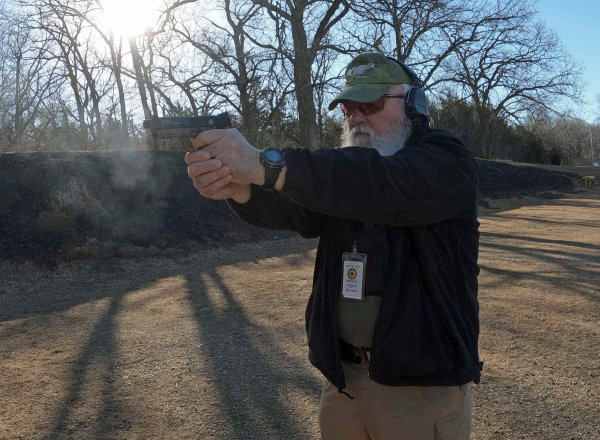In our companion service, The Tactical Wire, I discussed the general concept of adapting to injury, age-related challenges or other physical impairment in regards to personal protection here. In that piece, I mentioned I’d had a problem with my hand and that I was referred to ‘occupational therapy.’
I’m happy to say that it worked out without incident. I’d already been preparing for the worse, having to have surgery or the potential for permanent incapacitation. I also considered that I should be doing more work “wrong-handed” anyway; regardless of how the present situation was resolved, it’s handy to remember that I carry a handgun, not a handsgun.

I found that my friends at DeSantis had some left-handed holsters that could work -- the D94 Cazzuto paddle for the M&P22 Compact and the Speed Scabbard for the LCRx 3" in 22 caliber. I discussed options for a S&W J-frame 3” (M317/M63/M60) and they offered the thumb break version of the Speed Scabbard -- the Thumb Break Scabbard.
I found the Cazzuto (slang for “tough guy” … or something) to be handy. I was still wearing a conventional set-up for my service gun and the paddle rig was just the thing to slip on for training.
The big deal with defense work – or just carrying a pistol for field use – is interacting with the holster. I don’t have a lot of trouble shooting the gun with either hand and I’m cross-dominant: right-handed, left eye is the ‘master’ eye.
For that reason, the draw from the “wrong side” brings the sights out in front of my master eye, a plus. Saves time and some effort. But it’s drawing with the less dexterous hand and that can be fumble-prone. It’s also a good reason to start out with a 22.
When you take a new shooter to the range, what’s the best gun to start them with? Since there’s little in the way of familiarity and lots of potential to foul up, use the softest kicking, most blast-free alternative you can. Even using air – like an airsoft or BB gun – is a good start.
Why did I elect to use the M&P22 Compact? No less an authority than Claude Werner noted the gun was remarkably reliable and it was more than accurate enough for the task. I’ve had this one a few years and I agree. So why gear up for revolvers?

I find the best guns for me to practice trigger control – especially when dealing with compromised grip and the tendency to re-grip, spoiling the shot – is a double action revolver. A light gun with a heavy trigger is a chore to shoot accurately, but that pays dividends when shooting the more powerful guns.
The first gun I tried to draw and fire southpaw was the S&W M&P22C in the DeSantis D94. As I was just “seeing how bad it was,” I set out a B-8 repair center and used the holster-intensive qualification I’ve been using for most of the year. It’s only ten rounds with four draws, but I later added five more draws starting with my hand on the holstered handgun.


A failure to feed knocked me way out of the running on the very first stage – that’s what happens with reliability when you’re changing things up. The second stage was down two points for time – no surprise and the third, a reload stage, was a disaster as I didn’t set up with a magazine pouch. Since I was about as disappointed as I was going to be, I worked some essential drills. With ten singles from the holster, ten rounds fired on the “Vickers’ Demand Drill” (average .19 second) and some other basic drills, I sorted out my shooting – ideally, something I should have done before adding the draw.
Lesson learned. Next, it’s time to move to the revolvers.
Forget infirmity; work to your weakness and try to improve it. If you always do what’s the most comfortable thing for you to accomplish, you’ll never get anywhere.
-- Rich Grassi